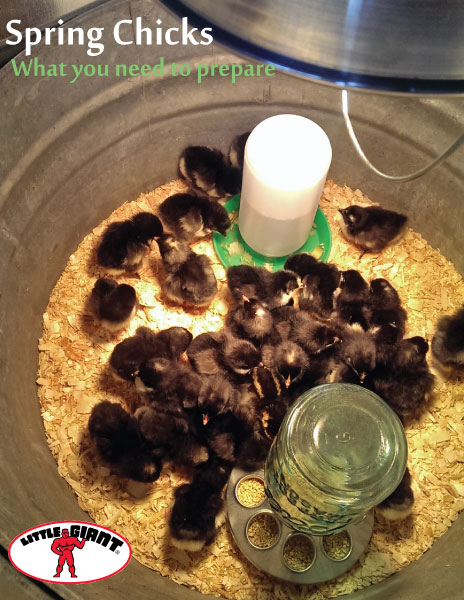 As the hatchery catalogs begin to arrive in mailboxes, gears start turning for all the new and experienced hobbyists. Spring is an important time to establish a new flock of birds or add to your existing flock. But, what exactly do you need to get started? Before your baby chicks arrive at your local post office, there are a handful of items that will keep your new chickens safe, healthy, and happy to start life on your homestead.
As the hatchery catalogs begin to arrive in mailboxes, gears start turning for all the new and experienced hobbyists. Spring is an important time to establish a new flock of birds or add to your existing flock. But, what exactly do you need to get started? Before your baby chicks arrive at your local post office, there are a handful of items that will keep your new chickens safe, healthy, and happy to start life on your homestead.
Feeding and watering
Chicks sent via the USPS are 24 hours old and have survived the trip feeding off the last of the nutrition from the yolk sac they absorbed right before hatching. From now on, the chicks need plenty of water and food to keep healthy. Chick feeders and waterers made specifically for the young birds make it easy for them to drink while keeping them safe from drowning. Available in both plastic and galvanized, hobbyists can choose the look they like best. You can purchase feed from your local farm store. To introduce them to the water, lightly dip each chick’s beak into the waterer to let them know where and what it is.
Warmth
Baby chicks are extremely susceptible to temperature swings. The temperature of the brooder for chicks is very important to keep steady, warm, and consistent. You should keep the temperature in the area around 95 degrees when you first receive your chicks. The use of a heat lamp will keep all of the chicks content. Using either a red or clear light, you can raise or lower the heat lamp above the brooder to find the right temperature for your chicks. If you see them scattering to the edges, the lamp is too warm, and if they’re all huddled together directly under the light, you should increase the temperature. 
Safety
While baby chicks are adorable, they still need some help learning the ways of their new world. Corner crowding is a common problem for newly hatched chicks. They can force their way into a pile in any corner, and suffocate those on the bottom of the pile. This is easily remedied by keeping the chicks in a round enclosure. With no corners, corner crowding is entirely avoidable. A brooder kit allows you to keep the birds safe and warm while also providing a handy hook from which to hang your brooder lamp.
Bedding
There are plenty of options to line your brooder to aid in heat retention and to absorb waste from the chicks. From paper to pine shavings, feel free to use a cost effective solution for your situation. By introducing your chicks to their food and water from the get-go, you should be able to avoid any ingestion of the bedding material. Backyard Chickens has a great guide to more options.
Fire Safety
Always follow the product instructions for any heated items used around your chicks. Heat lamps can generate high temperatures and should be kept a safe distance away from combustible materials including bedding. Never let your heat lamp contact other objects and always use with the safety guard in place. Keep the lamp secured to avoid it from falling or being dislodged. It is best practice to connect all electrical items to a Ground Fault Circuit Interrupter (GFCI) equipped outlet and avoid using extension cords. Remember to check on your equipment and animals frequently to provide the greatest amount of safety for you and your chicks!
There are hundreds of magazines, blogs, and experts on the subject of backyard chickens. There are a thousand more blogs from hobbyists at all stages: figuring out how to start and how to succeed in a responsible manner for the birds and the community. Mistakes will be made (just ask Mad Woman of the West who wrote “The Ignorant Gal’s Guide to Things No Sane Person Would Tell You about Chickens”), but lessons will be learned. Have fun with your new hobby, and have fun watching your birds mature and grow into healthy, happy hens and roos!


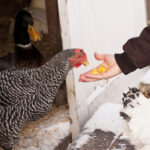

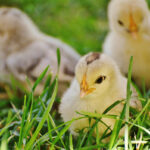
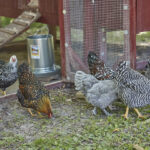
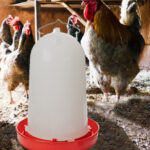
Leave a Reply